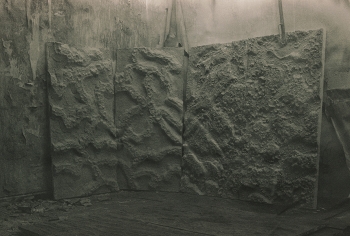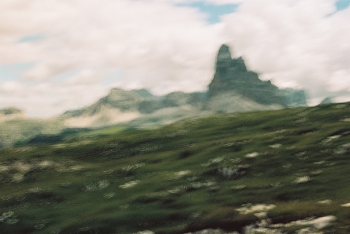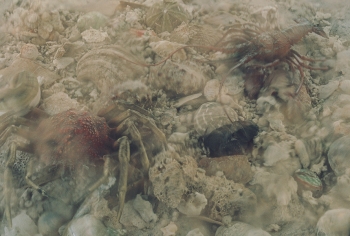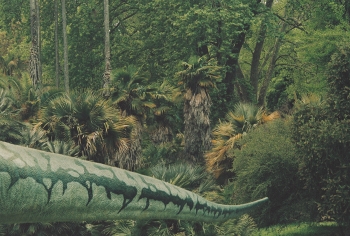The harmonious coexistence of humans and the rest of nature in the distant past is a romanticized and largely fictional notion. In truth, our relationship with nature is, and always was, less romantic. We eat nature. We take up space that wild nature would otherwise occupy.
Emanuele’s work begins with delicate depictions of the landscape that are at once lost in the past, and at the same time never existed. Aliger gigas is a work of mourning for the earth-mother we never had. It strips the aura from Nature, yet confronts us with more profound mysteries: What is an environment? Does the environment include or exclude us? Is it natural or artificial, or both?
The exhibition presents photographic works that are based on the creation of spatial narratives using studio-fabricated dioramic models that are then photographed to yield images that hover somewhere between the fake and the authentic, the actual and the invented. It’s a chimera, a Wanderlust, vast and unpredictable, not knowing which landscape is unspoiled and which is mediated by man.
Out of synthetic materials Emanuele has created an analogue representation of plausible scenes, ones with no real equivalent, just an approximation of what might exist in the real world. Nature has turned out to be a plastic knockoff of the real thing. Which isn't necessarily a bad thing. Comedian George Carlin once said, “The earth doesn’t share our prejudice toward plastic. The earth probably sees plastic as just another one of its children. Could be the only reason the earth allowed us to be spawned from it in the first place. It wanted plastic for itself; didn’t know how to make it ... needed us”.
Certain terrains are manufactured with polyurethane foam, then assembled with true specimens. This not only engages nature with plastic, one of the very things that is destroying it, but also turns the natural into a shrine. Thus, despite everything we do as humans raises suspect, often abomination, as we assume that there is a Nature from which we're a deviancy, one should almost imagine this act of enclosure as a protective gesture, a method to show how malleable and fungible things are, a way to get closer, to get into a relationship.
Nature as an ideal image, a self-contained form suspended afar, shimmering and naked behind glass like an expensive painting, is dead. Nothing is virgin territory. And now that it is, perhaps we can begin to write some new parts for ourselves, ones that will show us how to start out from here, not from some imagined state of innocence, and let go of this nonexistent separation. Perhaps Aliger gigas is an example of non-Nature, a world of interlocking exchanges, a layered scape where longing for an idealized past meets the promise of an undetermined future.



